Finale

2021 Wellness Program “The Beauty Chef”
 This is Just the Beginning!
This is Just the Beginning!
Taking Control of your Wellness is a Lifelong Adventure!
I hope you have enjoyed our 2021 Wellness Program. We wanted to help you gain the skills necessary to own your personal wellness by giving you knowledge and maybe a few new skills that improve total body health. Let’s recap some of the great information that was shared during this program:
The “Beauty Chef” cookbook was the inspiration for this years wellness program. And it is a wealth of knowledge! I know I will continue to enjoy recipes from this cookbook for many years to come. More than just a cookbook, it covers such important topics such as Inflammation, The Science of Eating, Fat and Your Skin, and a new understanding of your Gut Instinct. I hope you will continue to use this beautiful book for a lifetime and share what you have learned from it with others.
As we moved into our second week we discussed a “Holistic Approach” to wellness, with such topics as: Grain Pain, Dairy and Sugar. We also learned techniques on Fermenting Vegetables. Our seminar with Sunshine Grindz proved that this process is not at all difficult and the health benefits are so important!
Once we had the tools necessary to overhaul our wellness we continued to add more and more important information to create a well rounded program. Learning how to set Track-able Goals, Herbal Medicines, Fermented Beverages, and the benefits of Grass Fed Butter. As the weeks progressed we were able to assist our members with their fermentation projects by learning about Yeast vs. Mold. We also touched on some very important aspects of total wellness such as Finding Your Joy, Meditative Breathing, Tools for Eating Out, and important information about Protein.
With week 5 we began to look at some of our inner difficulties, such as Emotional Eating, Understanding Metabolism, Finding Balance and the importance of Meditation. As the weeks progressed we discussed Alcohol and its Effect on Gut Health, Understanding Hunger, Finding Your Fitness, Thoughtful Words, Alkalinity and finally…Positive Visualization!
It has been our pleasure at AquaGym Fitness to present the 2021 Wellness Program “The Beauty Chef”. We have enjoyed getting to know those of you who have been participating. This is just the beginning! Visualize your continued health, build the new habits that improve your gut health and ENJOY your new healthy body- It is the only one you will get!
HOMEWORK
Enjoy this Life, this Body and this Earth.
Visualize your goals and your future.
Work toward them each day.
Remember YOU can take charge of your health and wellness through these ancient natural techniques.
Now go FIND YOUR JOY in everything that you do!
Week 7: Day 1
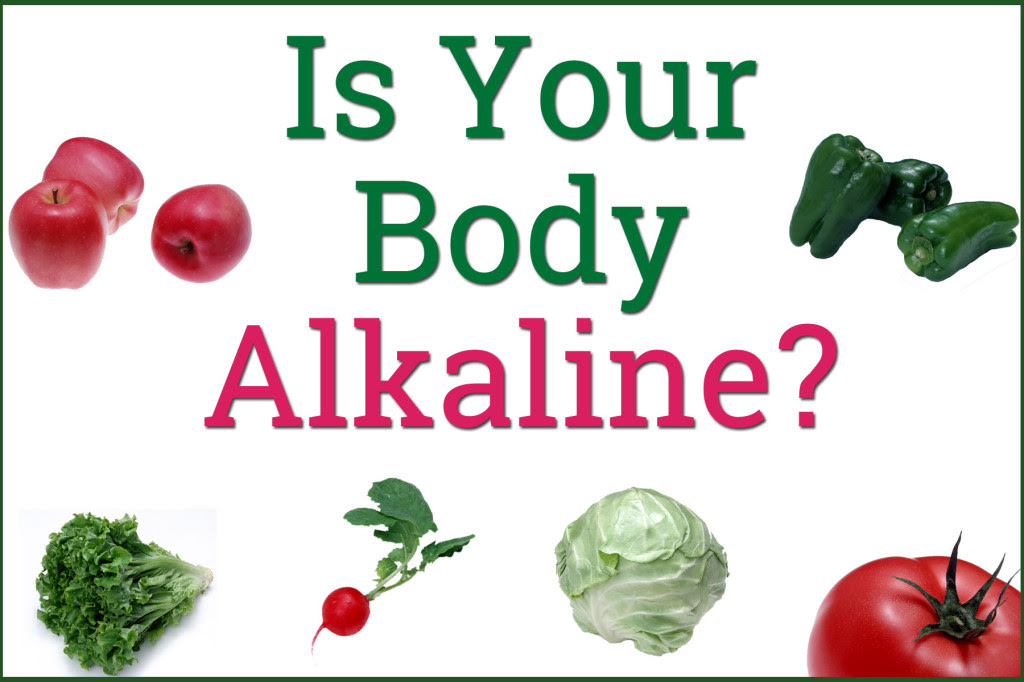
2021 Wellness Program “The Beauty Chef”
Balancing the Gut: Why Do You Want To Be More Alkaline?
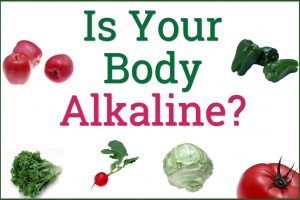
The first step towards great health begins with helping the body become more alkaline. One way to achieve this is to add more alkaline foods to your diet. In this article, we will cover the basics of an alkaline diet, including: alkalinity vs. acidity, the health benefits of implementing an alkaline diet, and alkaline foods to include in your diet.
Alkalinity vs. Acidity
Before we begin, let’s review some basics about pH, acidity, and alkalinity. Acidity is measured on pH scale, which can range from zero to 14. If the pH is lower than 7, it is acidic and if it is higher than 7, it is alkaline. A pH of seven is neutral.
pH in the Body
In the body, the acid-alkaline balance is important. This is because many functions in the body occur only at a certain level of acidity or alkalinity. For example, the skin, stomach, bladder, and vaginal area are highly acidic to protect us from outside invaders. Whereas most of our other organs and cells function best in an alkaline pH.
Because many enzymes and chemical reactions in the body work best at a particular pH, a small change in the pH can have a profound effect on body function. The pH level at which your body works best is around 7.4.
Benefits of Implementing an Alkaline Diet
Western diets typically leave our bodies very acidic because they are overloaded in poor fats, over consumption of protein, not enough fiber, and too much sugar. When the body becomes too acidic, it leads to inflammation and an increased risk for other diseases and disorders. Whereas an alkalizing diet helps to balance your pH level, ultimately reducing acidity.
When you have a more alkaline environment your body is able to function at optimal levels. For instance, alkalinity can aid in the reduction of inflammation, including the brain, gut, skin, and muscles, which are often impacted in children with autism.
In addition to alleviating inflammation, an alkalizing diet also inhibits the growth of yeast and bad bacteria which is common in children with autism. This also allows for better detoxification in general.
I have found many of my patients flourish when following the proper alkalizing diet and detoxification protocol. This reflects a lifestyle change that can make life significantly better, especially when dealing with autism. It is also important to identify specific food allergies or sensitivities that may also trigger symptoms.
Foods to Include in an Alkaline Diet
The pH of the food itself does not dictate how it reacts in our body. For example, one might think that fresh lemons and limes and raw organic apple cider vinegar are acidic, but they actually become alkaline when consumed.
Prime examples of acid forming foods are animal proteins, sugar, coffee, juice, and processed foods. While alkaline foods include leafy greens, root vegetables (especially radishes), broccoli, cauliflower, garlic, lemons, cabbage, and even some peppers, such as cayenne!
Alkaline foods to include in your diet:
- Leafy green vegetables
- Most fresh fruit
- Fermented foods such as kimchi and sauerkraut
- Plant based protein sources
- Cauliflower, broccoli,and brussels sprouts
- Raw nuts and seeds
- Herbs
- Lemons
- Beans
- Peas
- Spinach
- Tomatoes
- Radishes
- Beets
- Cucumbers
- Garlic
- Avocados
- Olive oil
- Alkaline water
- Carrots
- Celery
- Green tea
Conclusion
While there is no single diet plan that helps for everyone, following a healthy, alkalizing diet helps the majority of people I know. Furthermore, it’s not a difficult diet to follow and may be the next step for helping improve your health and well-being.
HOMEWORK
Everything we have done this far includes this.
Alkaline Body – 7.4
You have learned so many delicious techniques already!
Apply them all and understand…
Your body has a place, Your mind has a place and Your soul has a place.
All of which is your WELLNESS.
Week 6: Day 5

2021 Wellness Program “The Beauty Chef”
 Positive Visualization…The Ultimate Technique to Help You Achieve Your Goals
Positive Visualization…The Ultimate Technique to Help You Achieve Your Goals
Positive visualization is a technique to master real world situations and achieve goals by using the power of positive thinking. .
Think of positive visualization as a “mental rehearsal” that we carry out in our minds. It is like a daydream but more focused on the goals that we want to achieve. Positive visualization, much like its name, talks about focusing on the positives in life and that practice supposedly makes even herculean tasks look achievable.
You could also say that positive visualization is a technique to affect real-world situations by using the power of positive thinking. The key is to visualize a situation even before it happens to you. Once you know your goal, you focus on the step by step specifics that you will need to achieve it.
Let’s take a look at some of the benefits of positive visualization:
- It can be a source of hope and inspiration
During times when you have hit a low, positive visualization keeps you from feeling defeated and hopeless. It energizes and inspires you rather than let you feel hopeless. Once you start visualizing about success and happy times and have a positive outlook about the situation, there’s no head-space left to sob over the spilt milk. - It boosts self-confidence — By visualizing ourselves having and doing the things we need to succeed, we feel more confident in ourselves. And the more confident we feel, the more likely we are to make the decisions that need to be taken for us to succeed.
- It improves your focus — When you visualize the same things again and again, it tends to improve your focus. Once you work on thinking about one thing and focusing upon it, you will realize that your brain is generally getting more and more focused due to all the mental exercise that it has been doing.
- But how can you practice positive visualization? — Remember that positive visualization is not a shortcut or a substitute for practice, determination, and hard work. However, it strengthens your determination and hence is an essential tool for achieving your desired goals. If you find yourself struggling with self-doubt and lacking motivation, positive visualization will do the trick for you.
Chalk out the steps you need to go through to achieve your said goal and imagine yourself going through that process. The more accurate and real the details are, the better. By doing this you are simulating the experience in your head.
Remember to add emotion to your visualization. Imagine yourself to be taking charge and visualize how it feels. To be able to feel that calm and that independence, to be able to visualize that sense of accomplishment is very important. This helps your brain build a muscle memory against tougher times and challenges.
Here are some ways to aid the process of positive visualization:
- Meditation: You can always either meditate by yourself or to a guided tape. Meditation helps you focus on your breathing and on your thoughts and gives you the head-space to visualize your wants and your goals.
- Guided audio programs: There are guided audio programs that help you to reach success in positive visualization.
- Vision boards: A vision board is a home-made poster with images and phrases to help remind you of the positive behavioral changes you seek. Make as many boards as it takes and place them at places where you would come across them every now and then. Remember that these images should not trigger negative thoughts or memories.
So give the process of positive visualization a shot to bring some positive changes in your life.
HOMEWORK
You are what you think about most.
Use the technique of positive visualization to inspire your life of wellness.
Take a walk on the beach…it’s BEAUTIFUL out there!`
Week 6: Day 4

2021 Wellness Program “The Beauty Chef”
The Ongoing Battle with Hunger
 The people who fail at weight loss do so not because their eating plan or exercise plan stops working. It’s likely more because they stop practicing the healthy lifestyles. It can occur at any point in the process of weight loss, and it is often when people start to believe that they don’t have enough willpower. But answer to why people begin to feel a lack of willpower is not that simple. Hunger and appetite issues are physical signals from the body. If those signals are strong enough willpower may not be enough.
The people who fail at weight loss do so not because their eating plan or exercise plan stops working. It’s likely more because they stop practicing the healthy lifestyles. It can occur at any point in the process of weight loss, and it is often when people start to believe that they don’t have enough willpower. But answer to why people begin to feel a lack of willpower is not that simple. Hunger and appetite issues are physical signals from the body. If those signals are strong enough willpower may not be enough.
Hunger is mostly regulated by two hormones: leptin and ghrelin. (There are some other hunger hormones and peptides that come into play as well, but we will focus on the two key hormones). Normally, when you eat, leptin levels increase after a meal, and it sends a signal to the hypothalamus in the brain to tell you to stop eating. Ghrelin, on the other hand, increases when you haven’t eaten for a while or when you reduce the amount of food that you eat. Ghrelin is a hunger stimulating hormone that increases your urge to eat.
So in a perfect world, all of us would have enough leptin to curb hunger and appetite, and just enough ghrelin to “remind” us to eat from time to time. When leptin and ghrelin work in harmony with one another the result is prevention of excess eating and maintenance of appropriate appetite control.
Sometime the levels of leptin or ghrelin levels can become imbalanced or stop working in sync with one another. When this happens, it becomes harder to lose weight or to control strong urges to eat.
The person who gains weight and more body fat actually develops high leptin levels, and low ghrelin levels. Even though leptin should help to curb appetite, the mechanism is faulty in the overweight person who continues to gain weight. If this person goes on to lose weight, the leptin levels start to drop and ghrelin increases. Why? Because when calories are reduced, the normal physiologic response then switches to less leptin and more ghrelin. The end result can be increased hunger, decreased satiety (the feeling that you have had enough to eat), and you guessed it…weight regain.
The physiology of weight loss is an issue that has to be reckoned with, and at this point you may be thinking that long term weight control is a hopeless endeavor. Well we’re here to tell you that it’s not hopeless. If you understand what could happen and why, you will realize the importance of taking steps to keep the leptin and ghrelin hormones in better balance.
The American College of Cardiology, American Heart Association and The Obesity Society have studied the issue of weight regain and maintenance. They have set forward these weight management guidelines for the long-term weight loss maintenance:
Maintain physical activity. In the early stages of weight loss, simply getting exercise was perhaps your goal. Now it’s time to increase the amount of time spent on physical activity. The recommendation: 200 – 300 minutes per week (3-5 hours)
Revise your calorie intake based on your new weight and amount/intensity of physical activity.
Monitor your body weight. Studies have indicated that frequent weighing (daily or at least weekly) at this stage of the weight loss process helps prevent relapses.
In addition to the above guidelines, emerging research on the subject of weight regain suggests these steps as well:
- Increase fruit and vegetable intake… we know, you’ve read this before ?
- Increase water intake
- Eat breakfast regularly
- Reduce frequency of snacking unless planned as part of daily caloric intake
- Choose nutrient dense foods
HOMEWORK
This Wellness Program has not been about weight loss specifically, but some of you may have lost weight.
Either way – this is valuable information when it comes to understanding why LIFESTYLE is so important to your health.
So put it all together… Your track-able plan, your new approach to understanding food and gut wellness, adding fitness to your routine, finding Joy in everything you do, taking time to be quiet, being kind with your words…
Take a walk on the beach. Its beautiful out there!
Week 6: Day 3
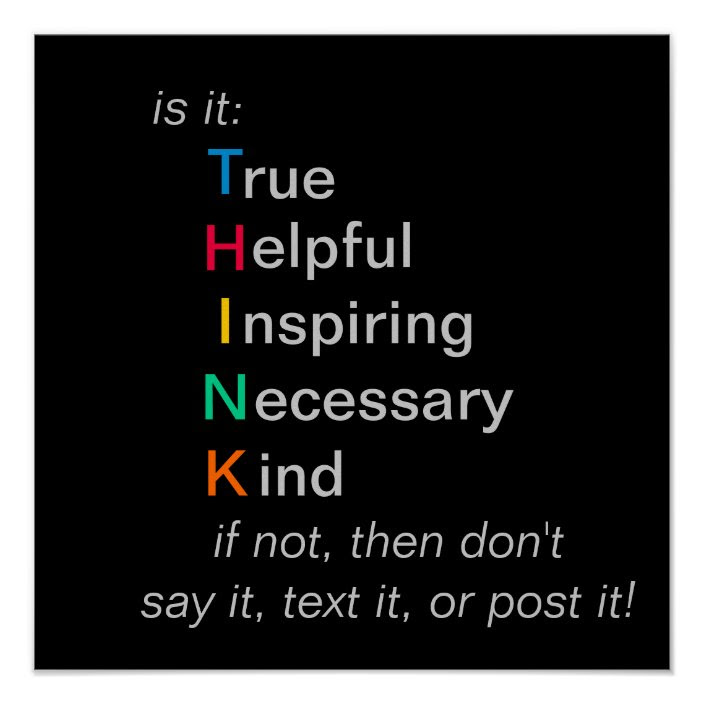
2021 Wellness Program “The Beauty Chef”
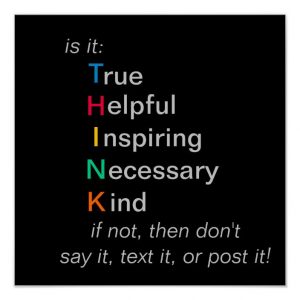 11 Reasons Why You Should Think Before You Speak
11 Reasons Why You Should Think Before You Speak
Go ahead and admit it. You have said things before that you wish you hadn’t—and wanted to take back. Right? Sure, we all have.
It’s part of human nature. Sometimes we get so emotional about something that we forget to think before we speak. It’s like something paralyzes our rational and logical brain, and in the process, our emotional brain lets words come out of our mouths that never should have.
However, some people do it more regularly than others. And if you want to learn how to think before you speak, you have come to the right place.
Let’s talk about the 11 reasons why you should think before you speak.
Some people may have been taught by their parents to think before words come out of their mouths. But many others have not. If you are in the latter category, then you will want to seriously think about these very important reasons why you should think before you say something you shouldn’t.
- Your Words Reflect Who You Are — When I was growing up, my mother taught me and my sisters not to use swear words. I thought she just wanted us to be lady-like, but there was an even deeper reason. Sure, being lady-like is a nice thing. But beyond that, she was teaching us that the words you use determine your character. They affect not only yourself but also how people perceive you and what kind of person they think you are.
- Words Have Power — I’m sure that you are aware of the politically correct language movement. Basically, it’s changing words to nicer ones. For example, back in the 1970s, people used to use the word “retarded” to describe a person who was mentally slower than average. But since then, people have started using it as an insult. So, over the years, we have adopted different words and phrases like “special needs.” The point is that if you make the words nicer, then they will not hold as much negativity.
- Words Can Hurt (or Help) People — As I mentioned, words have power, and part of this power can be good or “evil.” What you say to a person can hurt them—emotionally and mentally. And even though the saying goes “sticks and stones may break my bones but words will never hurt me,” it is not true—words DO hurt. But they can also help. So, it’s important to make sure that the words you use help people instead of hurting them.
- Your Emotions Can Make You Say Things You Don’t Mean — I’m sure you’ve been angry at someone and said something that hurt them. And after you calmed down, you might have thought, “gee, I didn’t mean it like that.” You see, when you are angry, it shuts down the logical part of your brain and then your emotions rule yourself. And then when the emotional part of your brain doesn’t act as a filter for your words, you might say things you don’t mean.
- You Might Have Assumed intention on the Other Person’s Part — You might be upset at someone because you thought they had intentions to hurt you. Then, as a result, you might lash out at them because of it. But not everyone has the intention of hurting you. Sometimes, people say things that are interpreted as the opposite of what they intended. So, make sure you talk with them to see what they actually mean before you assume anything.
- You Might Be Overreacting — When we think someone said or did something hurtful to us, our emotions tend to go through the roof. Our automatic instinct is to explode. But that could very well be an overreaction. As I stated above, you should instead make sure that what they said warrants your emotional outburst because many times it doesn’t.
- Your Relationship With Other People (or Situation) Doesn’t Warrant Your Words — It’s one thing to explode in anger to your sibling, best friend, or spouse, but it’s another thing to do it to your boss or another superior. You need to assess whether you are about to say is appropriate for the kind of relationship you have with a certain person. By the same token, you also need to think about the situation. If it’s a time, say, when you are at work or a company party, then it’s best to keep your mouth shut and talk later.
- You Might Be Judging Too Harshly — Too many people judge others before they’ve heard the whole story. It’s easy to jump to conclusions, get angry, and say things that may or may not be true. If you automatically start criticizing and judging another person, they are going to get defensive. And when that happens, more negativity ensues, and the conversation (and relationship) can get ugly.
- Words Can Destroy Relationships — Speaking of relationships, the more negative words that are spoken to another person over time, the more it damages them—and also the relationship between the two of you. Think about it—would you want to stay with someone who was constantly calling you names and saying mean things? Of course not! Your words could absolutely destroy your relationship.
- Words Can Affect Other People’s Actions — Let’s say you are angry at your 10-year-old daughter and you call her “fat” without thinking about it. Well, this is something that she may carry with her for the rest of her life, especially if you say it often. She could easily become anorexic or develop some other problem. She may turn to self-loathing and start cutting herself. Words are long-lasting and affect other people’s actions.
- You Can Never Take It Back — Once you say something, it is out there forever! You can never take it back. Sure, you can try, but it won’t work. Taking back what you say is like trying to put air back in a balloon—it doesn’t work. It doesn’t matter how much you try, it won’t change the fact that those words are out there—forever.
What Should You Do Now?
Now that you know the reasons why you should think before you speak, how can you do that? It’s easier for some people, while others find it nearly impossible.
First, you should wait at least 5 or 10 seconds before you say anything, especially when you feel upset or angry. If you can’t keep your mouth shut, then an alternative is to just leave the room or situation. This way, you will prevent yourself from saying anything that you will regret.
When you pause for those few seconds or leave the room, you need to think about whether you have a good point to make.
Are your comments relevant, appropriate, or helpful? If not, perhaps you shouldn’t say anything.
Before you speak, consider the other person’s feelings. How will it affect them? Believe it or not, it will. And if you do find that you said something that you didn’t want to, then you need to apologize and take personal responsibility for your actions and words.
Finally, don’t forget to learn from your mistakes! We’ve all said things that we regret. It happens. But the difference between people who do it all the time and the people who don’t is that the ones who don’t have learned not to do it and now know how to do it better.
Final Thoughts
If you find it difficult to think before you speak, don’t beat yourself up over it. However, that doesn’t mean that you shouldn’t strive for positive change.
Empathy is key—think about how your words affect others. You want to be a positive influence on other people, not a negative one. So, make sure you choose your words wisely—you won’t regret it!
HOMEWORK
Spread wellness to others through your words!
Stop and T.H.I.N.K before you speak.
Wellness is mind, body and soul…words matter.
Week 6: Day 2

2021 Wellness Program “The Beauty Chef”
How to Find Your Fitness Level in 4 Simple Tests
 Most people are perfectly content with a laid-back, “just do it” approach to fitness: they hit the gym, work up a sweat, eat something healthy, and repeat. They’re happy with their current fitness level, and that’s all that matters. As for VO2 Max, optimizing macro- and micro-nutrient ratios, and other specificities? Leave that to the pros and obsessives.
Most people are perfectly content with a laid-back, “just do it” approach to fitness: they hit the gym, work up a sweat, eat something healthy, and repeat. They’re happy with their current fitness level, and that’s all that matters. As for VO2 Max, optimizing macro- and micro-nutrient ratios, and other specificities? Leave that to the pros and obsessives.
And that’s fine: if you’re seeking general fitness, exercise doesn’t need to be a part-time job — just something you do a few hours a week to keep the blood pumping, the body strong, and stress levels in check.
But now and then it pays to take a look under the hood to make sure you’re on track and moving in the right direction. If you’re not assessing, goes the adage, you’re just guessing.
A good place to start is to assess your fitness level. Once you know that, you can see what things you can improve upon in your fitness regime, or simply where you should start with a new fitness program.
Below we’ve assembled four simple tests to help you quantify your fitness. Each one measures the muscular strength, endurance, and power of a different part of your body. Together, they’ll give you a good idea of overall fitness. Use the results to guide your choice of workout routine or class at your local gym.
Muscular Strength, Endurance, and Power
To find your fitness level, you should examine your ability to perform in the three key areas of fitness: relative strength, muscular endurance, and power. Here’s what these terms mean:
- Relative strength is how strong you are in relation to your bodyweight. This is different from absolute strength, which refers to the sheer amount of weight you can lift, regardless of your size. Being able to bench 180 pounds isn’t all that impressive if you’re a 190-pound guy, but it’s a remarkable show of strength if you’re a woman who tips the scales at 110. To keep everyone on the same playing field, the following tests focus your ability to move your own bodyweight, which embodies the idea of relative strength.
- Endurance is broken down into muscular endurance and cardiovascular endurance. The former measures the ability of your muscles to repeatedly contract against a resistance (dumbbell, barbell, bodyweight, exercise band, etc.) for a given amount of time. The latter measures the ability of your heart and lungs to deliver oxygen to the body’s tissues during physical activity for an extended period of time. The tests below focus on muscular endurance, which is most relevant to classes you may take at a gym. On the other hand, cardiovascular endurance (also known as steady state endurance) is the main component of something like running a 10K.
- Power is the ability to express strength quickly — like sprinting or performing a vertical jump. It’s a key component not only to athletics but to healthy aging, as well. The more power you have, the more resistant you are to many types of injury.
4 Tests to Find Your Fitness Level
1. BODYWEIGHT SQUAT
Focus: Lower body
There’s a reason why the squat is often referred to as ‘The King of Exercises’ No other move mobilizes more muscle below the waist.
Perform a bodyweight squat with correct form:
- Stand with your feet hip-width apart.
- Push your hips back and bend your knees until the tops of your thighs are at least parallel to the floor. Bring your arms in front of you, keep your back flat, your chest high, and your weight on your heels.
- Return to the standing position as quickly and powerfully as possible. Repeat for one minute and record the number of reps completed.
- BEGINNER: less than 20
- INTERMEDIATE: 20 to 40
- ADVANCED: more than 40
2. PLANK
Focus: Core
There’s more to the core than making you look good in a bathing suit. The actual job of those muscles (including your abs, obliques, back muscles, and muscles around the pelvis)? Stabilizing the spine. No exercise tests this capacity, which requires tremendous “strength-endurance” better than the standard plank.
- Assume a push-up position, but with your weight on your forearms instead of your hands (your elbows should be directly beneath your shoulders).
- Squeeze your glutes and brace your core to lock your body into a straight line from head to heels.
- Hold for as long as possible and record your max time.
- BEGINNER: less than 60 seconds.
- INTERMEDIATE: 60 to 120 seconds
- ADVANCED: more than 120 seconds
3. PUSH-UP
Focus: Upper body
Think you need a barbell and three gargantuan spotters to test your upper body? Think again: Studies show the pushup activates just as much muscle as the bench press when matched for intensity — without the need for equipment.
Perform a pushup with correct form: get on all fours with your feet together and place your hands in line with (but slightly wider than) your shoulders. Clench your glutes and brace your core to lock your body into a straight line from head to heels. Keeping your elbows tucked, lower your chest until it’s a few inches from the floor. Push yourself back to the starting position, keeping your body straight the whole time. Repeat as many times as you can in one minute. Record the number of reps completed.
Women:
- BEGINNER: less than 15
- INTERMEDIATE: 16-24
- ADVANCED: more than 25
Men:
- BEGINNER: 25 or fewer
- INTERMEDIATE: 26-39
- ADVANCED: 40 or more
4. BURPEE
Focus: Total body
The final test blends qualities of the previous three — and as such tests the strength and endurance not only of your upper body, lower body, and core, but of all of them together. That’s why the burpee is a staple in the workout routines of everyone from basketball players to Navy SEALS. It makes everything burn, including your lungs.
Perform a burpee:
- Stand with your feet hip-width apart.
- Push your hips back, bend your knees, and place your hands on the floor in front of you.
- Jump your feet back into a push-up position, and then back into to a squat position.
- Now explode up, reaching overhead as you jump off the floor.
- Land softly, and immediately begin your next rep.
- Repeat as many times as you can in one minute. Record the number of reps completed.
- BEGINNER: 20 or fewer
- INTERMEDIATE: 20 to 30
- ADVANCED: 30 or more
- World record (in case you’re wondering): 47
Which Workout Is Right for You?
Because fitness isn’t always that formulaic, you might have scored intermediate in the bodyweight squats, but beginner in the plank. That’s when you’d want to find a program with a fitness level of beginner-intermediate. Or, if you crushed the burpee section to land in advanced fitness level, but struggled to break the intermediate level for push-ups, an intermediate-advanced” program could be perfect for you. These in-between programs are also useful if you want to challenge yourself with a program that’s slightly above your current level, but you don’t want to make the jump up an entire level right away.
HOMEWORK
Plan Your Week – Include Fitness
Create a S.M.A.R.T. plan for your fitness goals.
Find Joy in the little things.
Consider testing your fitness level.
Find Your Balance
Week 6: Day 1

2021 Wellness Program “The Beauty Chef”
How Alcohol Affects the Gut
 The gut contains more than 100 trillion bacteria, and this bacterial population is collectively referred to as the microbiome. Without a healthy gut, numerous other areas of our health will suffer, including but not limited to:
The gut contains more than 100 trillion bacteria, and this bacterial population is collectively referred to as the microbiome. Without a healthy gut, numerous other areas of our health will suffer, including but not limited to:
- Immunity, reduced or autoimmunity
- Nervous system
- Increased risk for diabetes and metabolic syndrome
- Increased risk for cancer
- Cardiovascular system
- Thyroid and metabolism
- Liver and detox outlets
- Joints and tendons
- Digestion and elimination (risk for intestinal conditions and infections)
- Stress hormones and adrenal gland problems
Countless diet and lifestyle factors can positively and negatively impact gut health and, often, we only give thought to it when we’re noticing life-altering symptoms. Hundreds of different varieties of bacteria live in the gut, some of them “good” and some of them “bad”, with the bad bacteria having a hand in many unpleasant symptoms, side effects, and chronic conditions.
When the bad bacteria outnumber the good, this is referred to as “dysbiosis,” or an imbalance in gut bacteria symmetry. We need more good bacteria to flourish than bad bacteria. Drinking alcohol can have a profound effect on the gut and can influence what kind and how many bacteria live there.
Drinking alcohol can have a profound effect on the gut and can influence what kind and how many bacteria live there. Even a single episode of drinking can damage the gut wall and can also lead to malabsorption of essential vitamins and minerals.
In studies, research shows that people who regularly drink alcohol, including to excess, have guts that look very different to those of people who drink little to no alcohol. Alcohol can also lead to a leaky gut, and can interfere with how the immune system functions, leading to increased inflammation within the gut and elsewhere in the body.
People who regularly consume alcohol or are prone to dependence on alcohol will typically have a gut-brain relationship that is strongly influenced by how alcohol alters the bacteria in the microbiome. Regular alcohol consumption can lead to leaky gut and low-grade chronic inflammation, which in turn can target other organs in the body, leading to autoimmunity, chronic conditions, or even alterations to the central nervous system and how the brain works. (12)
Even a single episode of binge drinking (five or more drinks for men, or four or more drinks for women in the space of two hours) can increase endotoxins in the blood, which are associated with the bad bacteria that can not only disrupt the gut, but can also lead to liver problems, autoimmunity, and other chronic conditions.
So what’s the takeaway?
Alcohol, while it can seem harmless if you’re only sporadically consuming it, can have a major impact on the gut. Genetics can play a role in just how sensitive you are, as well as other lifestyle and health factors (people who already have existing autoimmune, gut, or chronic conditions should be more cautious than those who don’t already have these issues). While alcohol certainly isn’t “all bad”, it’s essential, as with any other food or beverage, to assess how it’s impacting your body and whether it’s good or beneficial for you.
HOMEWORK
Plan Your Week
Create a S.M.A.R.T. plan for your goals.
Find Joy in the little things.
Consider reducing the amount of alcohol you have each day – The beverage seminar from last week shows a couple great replacements for your nightly cocktail.
Buy Organic
Find Your Balance
Week 5: Day 5
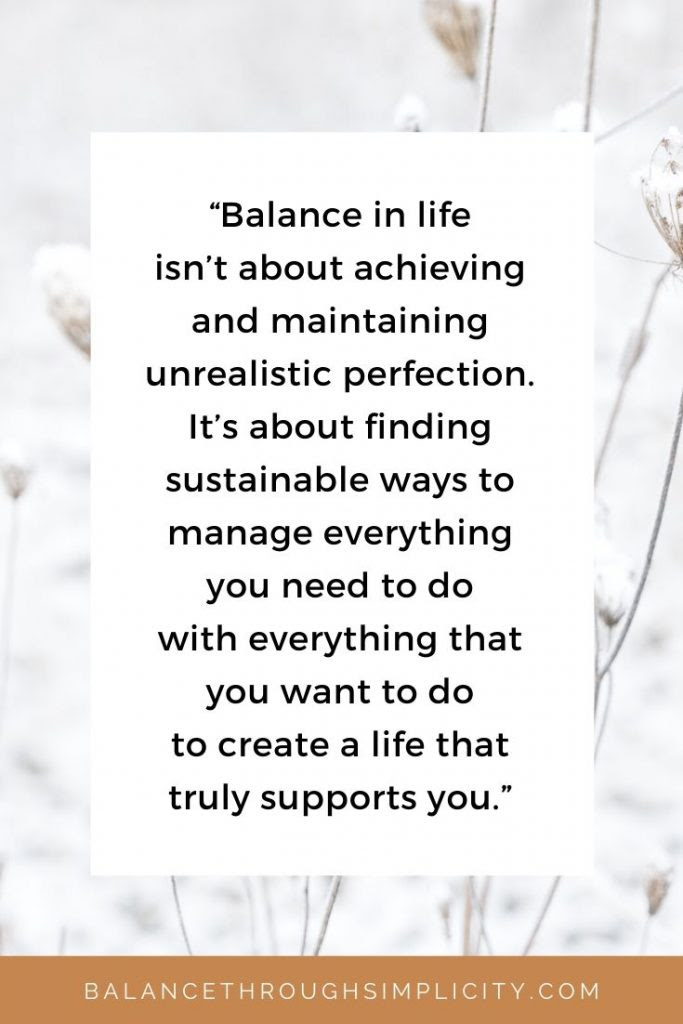
2021 Wellness Program “The Beauty Chef”
Life balance seems to be the topic on everyone’s mind of late. We have discovered that maintaining a healthy life balance is not only essential for happiness and well-being; it can be a tremendous boost to your productivity and career or business success as well. A well-balanced person has a far greater ability to focus their attention and energy on attaining their goals, taking productive actions and moving forward in a meaningful way.
The big question is…What does life balance really mean?
What would a balanced life look like to us?
And most importantly, how do we go about achieving it in the midst of our crazy schedules?
There are steps you can take to change what isn’t working and get back some control and balance in your life. And once you start seeing results, you’ll be better equipped to maintain that new found equilibrium.
The key is not to try to change everything at once, but to make small adjustments over time to determine what works for you. Eventually you will have a whole new set of positive life habits and you’ll never look back!
10 simple ways that work:
- Turn It Off — Disconnect on the weekend. I hear the excuses already, but try it, at least for one day or even a few hours each night.
Put the phone down and turn off the computer. Give your work brain a rest. Bonus: Spend the extra time actually interacting with your family and friends! - Trim, Trim, Trim — It’s a given that if your life is overflowing you will never be able to achieve balance and manage it all. It’s just not possible.
Say no to everything that is either not essential or doesn’t add something valuable to your life. Be ruthless! - Pay Attention to Your Health — We hear this over and over again, but usually only give it lip service. We know what we need to do, but it isn’t a priority until we have a health crisis.
Our health really does affect the quality of our lives and our work. We are far more productive and happier when we get enough sleep, eat a little healthier and fit in some type of activity.
- Minimize Toxins — By that, I don’t mean chemicals (though that might help too.) Minimize the negative influences around you.
Avoid toxic people (complainers, whiners, poor attitudes.) If you can’t completely avoid them, at least minimize contact and tune them out as much as you can. Surround yourself with positive, supportive, can-do people whenever possible - Spend Time Alone — Making time for you is probably the hardest thing to do for the typical overworked and overwhelmed person, but it is crucial for lowering stress, increasing happiness and encouraging creativity.
Some things to try: meditate, write, sketch, do some yoga or simply sit quietly for a few minutes each day and do absolutely nothing.
- Relationships Do Matter — Set aside quality time with your family and friends. Don’t just sit in front of the television, really connect and pay attention to those you care about.
Make a date with your significant other, have coffee with a friend, play a game with a child. Really get to know the people around you.
7. Treat Yourself — Get a pedicure or a facial. Better yet, schedule a massage. It doesn’t need to be costly; a glass of wine, your favorite coffee or tea, a delightfully scented candle or beautiful flowers will make a huge impact.
8. Explore the World — Take a walk and pay attention to what’s going on around you. Take a new route, visit a new town or try being a tourist in your own. Attend a local performance, play amateur photographer or go to the park and watch children play. They really know how to enjoy life!
9. Expand Your Awareness — Take a class, learn to paint or try something new that you’ve always wanted to learn. Read a book that sparks your interest or try listening to uplifting music. Find what interests you.
10. Remember Fun — Laugh, joke, play, find your sense of humor, subscribe to a daily joke or get a tear-off calendar. Nothing makes the feel better as fast as a good old-fashioned belly laugh.
HOMEWORK
Find your balance.
Prepare meals for the upcoming week.
Find Joy in preparing them.
Find time to be quiet.
Appreciate each day.
Week 5: Day 3

2021 Wellness Program “The Beauty Chef”
 Vegetables: The Original Super Food
Vegetables: The Original Super Food
As a group of foods, vegetables are by far the most health-promoting foods there are. When you exclude vegetables from your diet, you are missing out on all of the health-promoting components found in these foods. Vegetables provide us with a wide variety of phytochemicals and antioxidants. The word phytochemical refers to the compounds (or plant chemicals) found in vegetables or other edible plant foods. Phytochemicals come from different plant sources and there are several thousand different phytochemicals. A few words that are used when referring to phytochemicals include: antioxidants, polyphenols, flavonoids, isoflavones, and carotenoids. There are a number of studies that have demonstrated the many health benefits of vegetables and their phytochemicals.
Newer studies have emerged that suggest that the phytochemicals may have an even greater role in human health than previously thought. The bottom line is that most of us need to eat more vegetables than we do now. If there was ever a single step that you could take to make a major improvement in your diet, this would be it! Module 2 discussed the balanced plate method for filling your plate with the right foods. When it comes to vegetables, that means half of the plate!
Here are examples of prominent phytochemicals and specific health benefits:
(Source: http://www.fruitsandveggiesmorematters.org/)
| Phytochemical | Proposed Benefits | Food Sources | Other Facts |
| Beta-Carotene | Immune System Vision Skin Health Bone Health |
Pumpkin Sweet Potato Carrots Winter Squash Spinach Collard Greens Kale Broccoli |
Orange and dark, leafy green veggies |
| Lycopene | Cancer (Prostate) Heart Health |
Tomatoes Red Peppers Tomato Products |
The heating process makes lycopene easier for the body to absorb |
| Lutein | Eye Health Cancer Heart Health |
Collard Greens Kale Spinach Broccoli Brussels Sprouts Lettuces Artichokes |
This phytochemical is found in the macula of the eye |
| Anthocyanidins | Blood Vessel Health | Red Onions Red Potatoes Red Radishes |
Found in red & purple vegetables |
| Isoflavones | Menopause Cancer (Breast) Bone Health Joint Inflammation Lower Cholesterol |
Soybeans | ½ cup of boiled soybeans offers 47 mg of isoflavones |
Time to check in: How does your daily vegetable intake measure up?
Your daily intake goal for vegetable and fruit servings should be somewhere between 5-9 servings per day. We recommend that you have at least two fruit servings daily and at least 3-5 vegetable servings. If this sounds like a lot of vegetables, don’t worry. Serving sizes are not very large, making it very easy for you to get in the right amount of vegetables every day.
One vegetable serving size equals:
- 1/2 Cup cooked vegetables
- 1 cup raw vegetables
- 6 oz. vegetable juice
Shopping: Tips for Buying Fresh Produce
There is no doubt that the addition of vegetables (and fruit) to your diet will bring amazing health benefits. Along with lower incidence of chronic diseases and certain types of cancer comes a variety of flavor, texture, and nutrition that is just waiting to be taken advantage of. However, shopping for fresh produce can be both confusing and frustrating. Most of us know the feeling of buying produce only to find out they’re either already spoiled on the inside or so under-ripe that they need to be left out for days before eating. Thankfully, by following a few simple steps, you can make shopping for fruits and vegetables both an easy task and a wise choice for your health.
As always, it is an important step to write out your shopping list to cover what you need. It will save you both time and money. Next, celebrate the season. When produce is in season locally, the abundance of the crop usually makes it less expensive. A dark red, vine-ripened tomato still warm from the summer sun will be filled with flavor as opposed to a winter hothouse tomato that’s barely red and lacking in flavor. This is because foods lose flavor and moisture when they’re held. They’re harvested early and refrigerated so they don’t rot during transportation, and won’t ripen as effectively as they would in their natural environment. Seasonal produce will serve up the most flavor and nutritional value, is good for the environment, and will boost your budget. There are tons of guides to seasonal produce online, but a general chart is shown here:
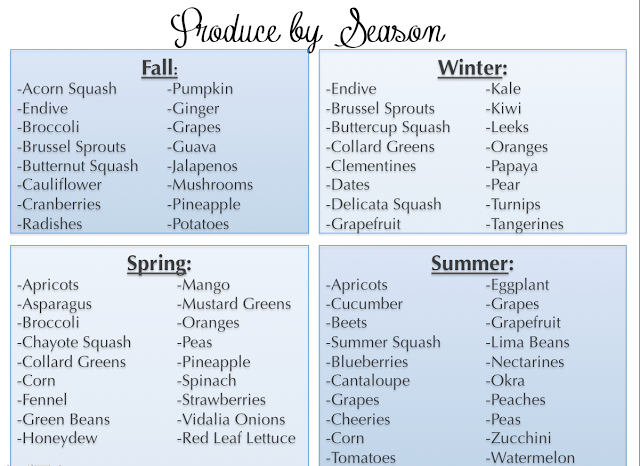
It’s also important to keep in mind that many farmers choose to use pesticides on their crops. Pesticides have been linked to a number of health issues and its best practice to limit your exposure to pesticides . While it may be impossible to avoid all pesticides, there are ways to minimize your exposure to them. Each year, the Environmental Working Group releases their “Shopper’s Guide to Pesticides,” breaking down which fruits and vegetables have the most pesticides and which have the fewest. To name a few, the most recent “dirty dozen” list revealed apples, strawberries, grapes, celery, peaches, and spinach. The fruits and vegetables on their “clean fifteen” list included avocados, sweet corn, pineapples, cabbage, and onions. While it may not fit in your budget, it is recommended to buy organic.
HOMEWORK
*Plan on attending the Beverage Seminar tomorrow night 5:45pm*
Consider adding more vegetables into your diet:
Green Minestrone pg. 71
Kale bowl with quinoa, fermented vegetables, wakame and avocado pg. 78
Week 5: Day 2
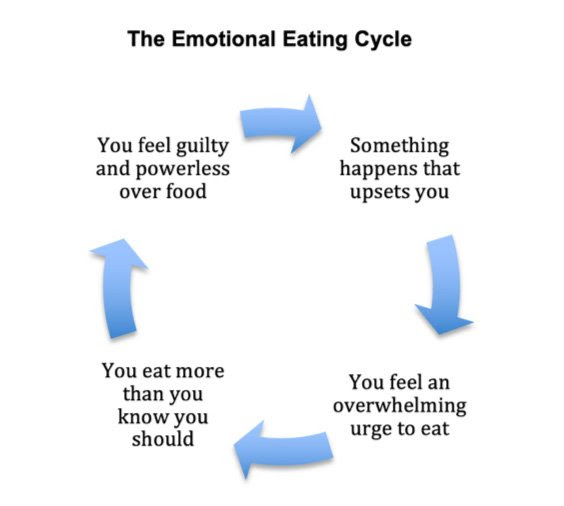
2021 Wellness Program “The Beauty Chef”
Emotional Eating
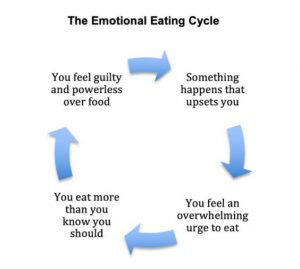 Understanding the science behind nutrition is what helps you to understand why fad diets and quick weight loss plans simply don’t work. So having this knowledge is great, and along the way we have given you tips for putting this knowledge into practice.
Understanding the science behind nutrition is what helps you to understand why fad diets and quick weight loss plans simply don’t work. So having this knowledge is great, and along the way we have given you tips for putting this knowledge into practice.
Losing weight or changing your lifestyle is a process that takes place over time as you take slow, deliberate steps to get to your goal. Along the way there are likely to be situations that sideline your progress or make it more difficult to stay on track. Emotional eating, dealing with social settings or just plain staying motivated are examples of situations that can get in the way of progress. Your next few lessons are going to cover some of these more challenging issues, and how you can deal with them.
Before we get started with this, please check in with where you are at right now with your goals and plans:
- What lifestyle habits or goal did you practice over this past week?
- On a scale of 1 (least) to 10 (most) how well were you able to achieve your lifestyle habits or goals?
- What did you have the most success with?
- What did you have the least success with?
- What can you do differently this week to make your less successful goal happen?
What is Emotional Eating?
It’s a fact: most of us don’t simply eat just to satisfy physical hunger. We have many other reasons why we eat: a special occasion, something (like a TV commercial) cues us to eat; a food looks particularly appealing, etc. When you think about your own situation each and every time you eat, you may recall many times that you were not physically hungry when you ate. Sometimes we turn to food to satisfy other needs besides physical hunger: for comfort, to relieve stress or to reward ourselves in some way. When the reason for eating is tied to a particular emotion (or emotions), it is called emotional eating.
The problem with emotional eating is that if it happens often, we are left with lots of extra calories and guilt afterwards. The eating may provide temporary relief, however the emotional issue is still there once the eating is over. When the feelings and emotions return, a cycle of turning to food and overeating will happen repeatedly. Unfortunately this is exactly the way some people gain excess weight. Over time the weight gain, guilt, and possible health consequences actually make a person feel worse. In order to stop the cycle of emotional eating, you must learn to recognize what triggers the eating behavior, and find ways to change the habits that have gotten in the way of healthy eating behavior.
One way to approach the difficulty of eating that is driven by emotions is to learn to become non-judgmental about your choices. When you examine your behavior without judgment, you can get to the source of the behavior and possibly alternative actions to emotional eating.
Refrain from tagging yourself as an emotional eater. Instead of defining yourself by your actions, think in terms of an objective description of the behavior itself. Why is this important? Well, when you label yourself as an “emotional eater”, this defines who you are and what you do. Your label as an emotional eater, in essence encourages you to continue the behavior because that is “what you do.” It may be more helpful to objectively describe the behavior in a different way, such as,
I am:
- Eating because I feel stressed
- Eating because I feel bored
- Using food for comfort
- Eating for emotional reasons
Can you see how that changes things?
The statement shifts from a negative label about you to a description of a behavior. This enables you to move forward in a more positive way, rather than beating yourself up!
Learn to Recognize Emotional Eating
Food is connected to so many life events and situations, that it may be difficult to distinguish which situations are really emotional eating. There is nothing wrong if we use food as a reward or celebration from time to time.
Holiday times, or occasions that connect food to our family heritage are examples of foods tied to emotions. These situations may not necessarily be a problem, and are often a part of our culture or connection with the people in our lives.
When eating becomes the way you cope with problems, you enter into an unhealthy cycle of eating. The unfortunate thing is that the real problem may not be addressed for a very long time.
You can recognize emotional eating if your first impulse is to turn to food whenever you are upset, stressed, bored, or angry. Food is not the solution for these problems, although it may temporarily make you feel better. So here are a few questions to ask yourself; they may give you a clue about whether your own eating habits are strongly tied to emotions:
- Do you tend to eat more food if you are feeling stressed?
- Do you eat even though you are not hungry?
- Do you keep eating, even if you feel full?
- Do you reward yourself with food often?
- Do you feel out of control around food?
If you answered yes to any or all of these questions, it may be an indication that at least some of the time you are eating for the wrong reasons. By getting a handle on the things that trigger the eating behavior, you can begin to stop the cycle of emotional eating.
Develop Emotional Understanding
One way to identify emotional triggers is to ask yourself “am I really hungry?” each time you feel like eating. If you are not experiencing the physical signs of hunger, your urge to eat was probably triggered by an emotional or environmental cue. Understand that when you eat for emotional reasons, you are trying to make yourself feel better. This is a natural tendency. By choosing not to feel guilt and shame afterward allows you come up with a better solution for next time: What might work better the next time you feel like eating for emotional reasons? Instead of an automatic reaction to a trigger, choose how you will respond instead. This may take some practice, but deciding ahead of time to practice an alternate way to respond to a trigger is the first step to changing the behavior.
Now for a little homework to you help understand and identify the emotional behaviors that you would like to change. Once you recognize the causes, you can work toward finding a solution to prevent the unwanted behavior in the future.
First, identify various times of the day that you eat.
- I eat at the following times during the day: ___________________________________
Next, are there times of the day that you eat even if you are not hungry?
- I tend to eat at ______________ time(s), even though I am not feeling hungry.
- When I eat even though I am not hungry I feel:___________________________________
- After I have eaten even though I was not hungry, I feel: ___________________________________
- I tend to seek out food when I am: ___________________________________
- The food I most often seek when I am (enter emotion here) ________________ is ___________________________________
Now, think of a time when you were able to go through an entire day without displaying any emotional eating behavior:
- What was different about this day compared to other days?
- What prevented you from reaching for food on that day?
- What do you think are the triggers that lead you to eat for emotional reasons?
- What is a realistic strategy that you could use to prevent you from unwanted or emotional eating?
So, are You really hungry??
To answer that question we recommend that you get in the habit of rating your hunger on a scale of zero to 10. The Hunger Scale is a tool to help you learn to listen to your body instead of your head. The premise is to eat when you feel hungry and stop when you have eaten enough. The guidelines below can help you to rate your level of hunger before you eat, and your levels of satiety (feeling satisfied) after you eat. When you mindfully practice this exercise, you will become more familiar with your eating patterns. Try it!
0- Starving! You feel like you can’t go on much longer without food.
1 – You are so hungry you want to eat whatever you can get your hands on.
2 – Any type of food looks good right now; you are very preoccupied with your hunger.
3 – You are hungry and the urge to eat is strong.
4 – You are a little hungry. You can wait a while before you eat, but you will be hungry soon.
5 – Neutral. Not hungry. Not full.
6- No longer hungry, but you could eat more.
7- Hunger is gone. Stop here and you may not be hungry again for 3-4 hours.
8- Not uncomfortable, but definitely have a feeling of a very full belly.
9 – Moving into feeling overly full and uncomfortable.
10- Very uncomfortable, maybe even painful. “Thanksgiving full.”
- Use the scale to rate your hunger before you eat. You goal is to eat before you enter into the red zones 0 – 2. If you wait until you are in this zone, odds are good that you will make less healthy choices and overeat because you are too hungry.
- Rate your feeling of fullness after you have eaten. Try stopping before you reach the red zones 8-10. When you eat until you are “stuffed”, you usually regret it afterwards, and feel very uncomfortable.
- The best places for your physical hunger somewhere in the green zones 3-7. Learn to eat when you are hungry, but have food before you become excessively hungry. Learn to stop when you feel satisfied, but before you become overly full.
Have the Right Stuff on Hand to Prevent Poor Food Choices
Emotional eating can take a while to overcome. You may feel as if you’re stuck in a vicious and unfair cycle. However with the right help and support, you can begin to control your eating and develop a healthy relationship with food. This relationship should be based on meeting your nutritional needs without letting your emotions take over. Much of this journey towards health and nutrition begins in your kitchen and pantry.
Before your weekly trip to the grocery store, it may be a good idea to set up a healthy home environment. Go through your fridge and pantry and identify those foods that trigger your emotional eating. This most likely includes many junk foods, fast foods, and high fat foods. Also eliminate foods that are highly processed with sweeteners, flavorings, and preservatives. Avoid buying foods that trigger emotional eating if mindfulness is your goal.
Now shift your focus to health and nutrition. Make a list of satisfying alternatives to buy that you could eat instead of the trigger foods. Having the right foods on hand will prevent poor choices when it comes to your health goals. Skip foods loaded with simple sugars and unhealthy fats like sugary breakfast cereals, donuts, cookies, ice cream, cakes, and chips. As you have learned in earlier lessons, these are rapidly absorbed by the human body and will provide you with an initial energy high followed by both a release of insulin and a crash. You will end up feeling hungrier, craving even more sugary and fatty foods. Instead choose unprocessed, healthy foods that will make you feel satisfied and energetic.
Once you have a list, you are ready to make a trip to the grocery store. Try to do your food shopping soon after eating a healthy snack or meal. If you’re not hungry, you aren’t as likely to fall prey to the impulse buys cleverly positioned by many grocery stores. Take a deep breath and stay mindful. Slow down and appreciate all the colors, smells, and feel of the produce. Shop this department extensively and then become selective in the products you buy. Stick to your list and read labels. If a food is made of ingredients that you cannot pronounce, it may be best not to place it in your cart.
Smart choices include fiber-rich complex carbohydrates and whole foods such as fresh fruits, vegetables, and lean meats. These will all provide you with slow, sustained releases of energy. If you do crave something sweet, opt for your favorite seasonal fruits like apples, blueberries, or pears.
Structure your list around your meals and stick to it, but be realistic about your food choices. Don’t deprive yourself – going “cold turkey” on your favorite foods won’t and shouldn’t happen overnight. It is best to decrease slowly instead of simply eliminating everything one day.
You’re more likely to overeat if you have junk food, desserts, and unhealthy snacks in the house. By clearing your fridge and cupboards of unhealthy snacks, you are removing the temptation and are already one step ahead. Replace them with fresh fruit, vegetables, and real whole food. Finally, avoid grocery shopping when hungry or upset. You can learn to nourish your body without letting your emotions get in the way, and it all begins in both your kitchen and grocery cart.
Satisfying Snacks That Are Easy to Make!
By now you should have the idea that keeping healthy snacks around is a good strategy to not only prevent overeating but also help to address emotional eating. Having the right things on hand, even if you do turn to food for comfort may save you from too many unwanted calories. We know that for some people, eating snacks prevents excessive hunger. If you start to use the Hunger Scale we discussed earlier, you just may find that those well planned snacks help to correct both the problem of overeating or emotional eating.
Don’t be tempted by those 100 calorie snack packs of crackers, cookies or salty snacks. This marketing gimmick has limited use for the person who is really hungry or turning to food for emotional reasons. The ONLY way 100 calorie packs work is if you stick to one pack! In most cases what you will find are processed foods made with refined flour that are packaged in tiny amounts. So what you get is something that is short on nutrition and satisfaction! One pack simply isn’t satisfying; therefore it’s easy to consume 2, 3, or more packs. Now your snack is no longer low in calories!
What we’re getting at here is that it’s much better to have a plan for at least a few healthy snack options that will be there for you when you need it. Here are some ideas:
- Apple and a low fat cheese stick
- 2 small clementine oranges & 15 almonds
- Sweet potato and beetroot chips with match, lime and chili salt – pg. 131 “The Beauty Chef”
- Goat cheese and melon:top 1/4 cup of European goat cheese with 1 cup of diced melon
- Hot cinnamon apple or pear: slice 1 apple or pear into microwaveable dish, sprinkle a little cinnamon, 1 tsp. brown sugar, 1 Tb. chopped nuts and 1 tablespoon of water; cover and microwave for 1-2 minutes
- Pierce a small potato a few times with a fork, and microwave on high for about five minutes or until soft. Top potato with 1 tablespoon of salsa and 2 tablespoons of plain Greek yogurt.
- 22 pistachios and a small bunch of grapes (around 15)
- 1 medium apple and Laughing Cow or mini Babybel cheese
- 5 oz. container low fat Greek yogurt with 1 Tb. chopped walnuts
- Sliced red pepper with 3 Tb. Hummus (or carrots, cauliflower or any raw veggie) See “Raw beetroot and sprouted chickpea hummus pg. 126 “The Beauty Chef”
- ½ whole grain English muffin with 1 oz. low fat cheese & 1 slice tomato melted
- 1 cup fresh strawberries and ½ cup low fat cottage cheese
- 1 cup raw celery with 1 Tb. peanut butter – try Roasted pumpkin, chili and tahini dip pg.127
- Spiced and seeded crispbreads – pg. 119 “The Beauty Chef” with Mushroom and walnut pate – pg. 120 topped with sprouts and a dice of fresh tomato
HOMEWORK
Look carefully at the question above. Answer them honestly.
Stock your home with healthy alternatives for snacking.
Make a list of alternate activities you can do when you feel the urge for Emotional Eating.
Beverage Seminar rescheduled for Thursday at 5:45pm due to the rain storm last night. I hope you can make it!


